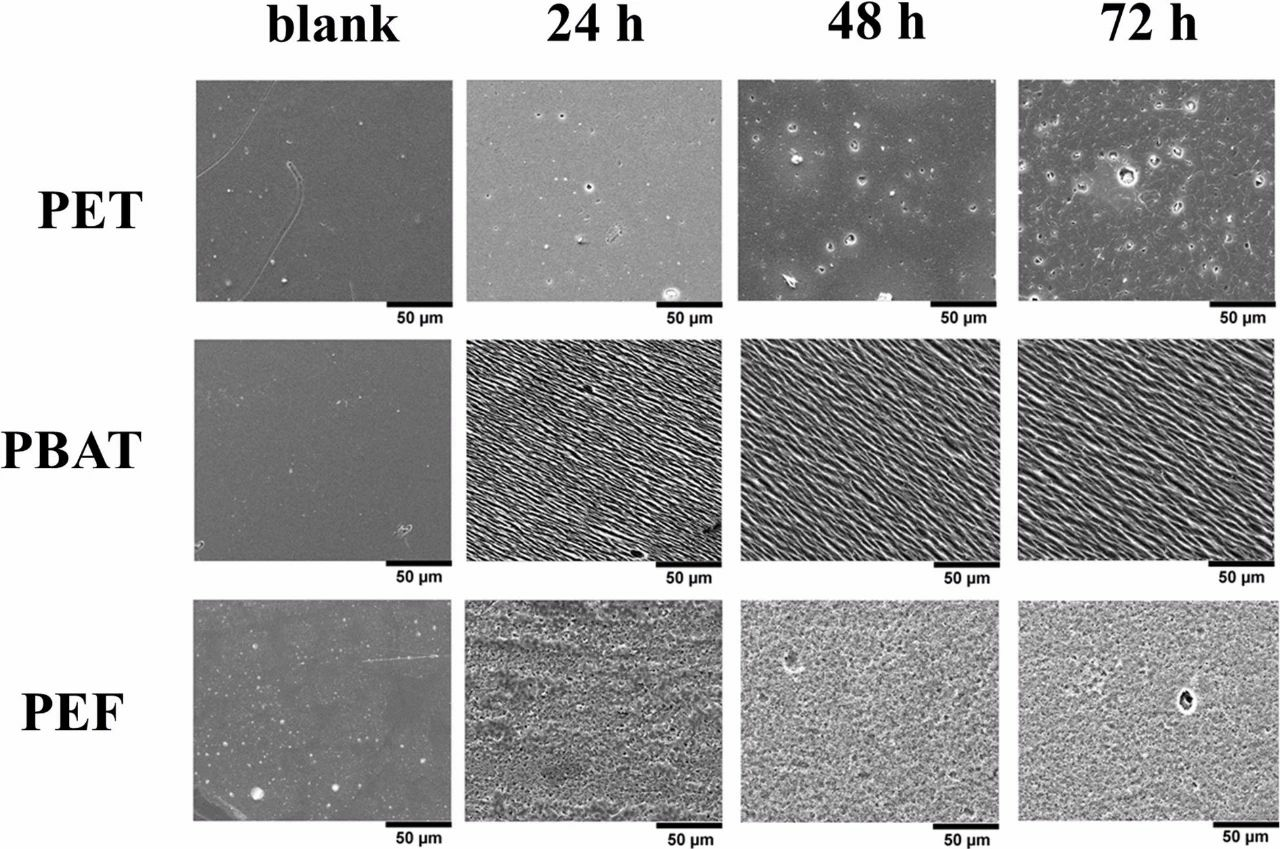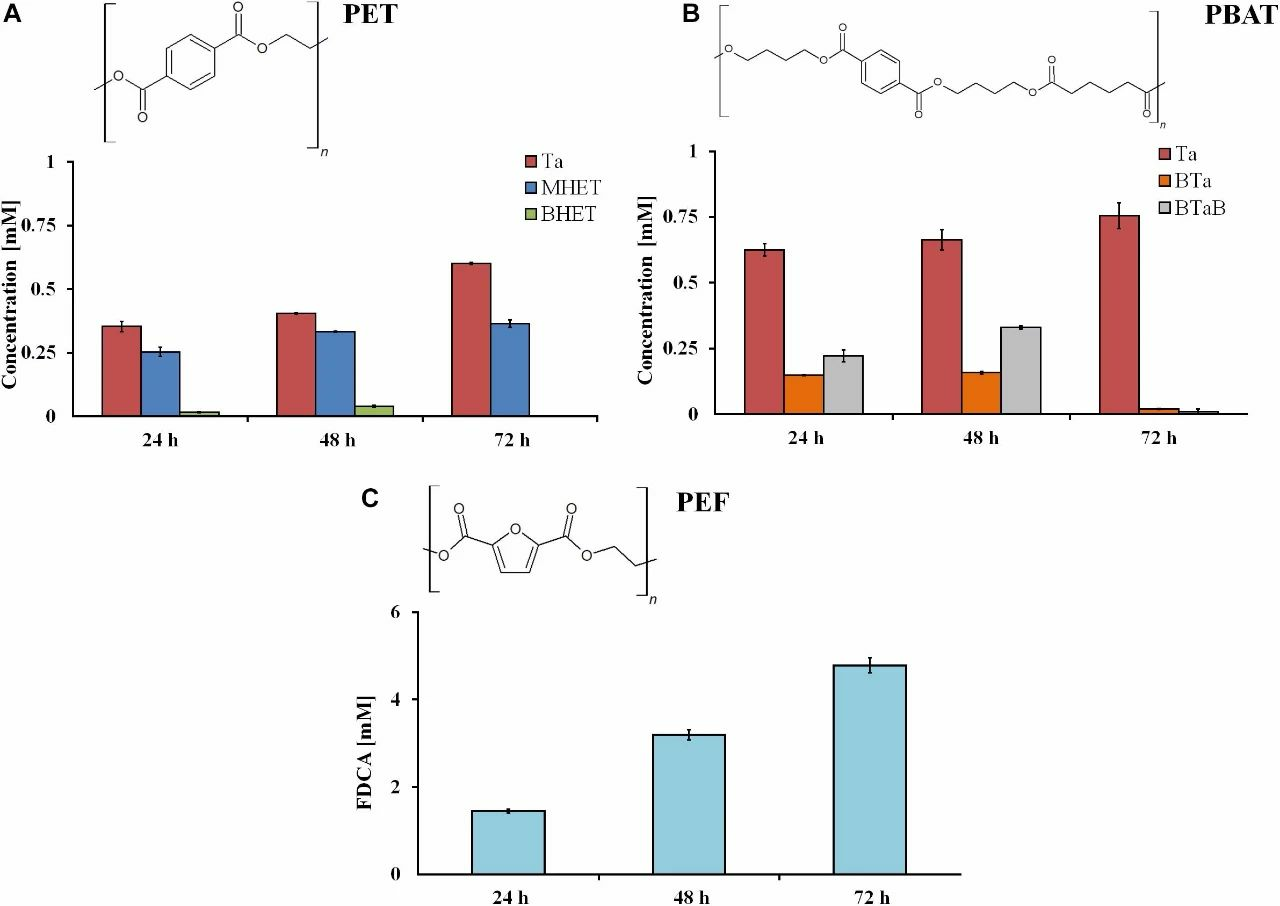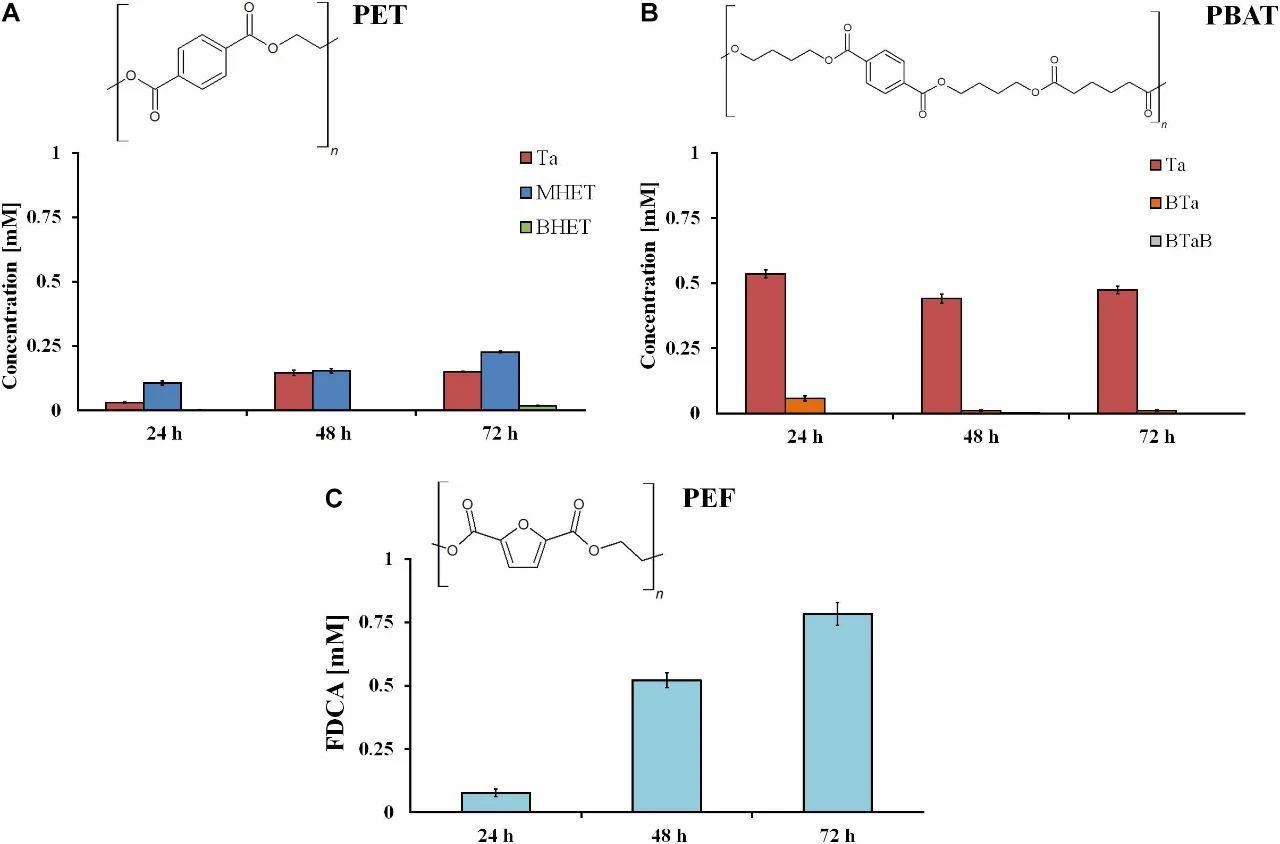On July 2, a researcher published a study in the journal Bioengineering and biotechnology frontier. Researchers found that the microorganisms in the cow cavity can not only degrade PET, but also two other plastics----Polybutylene adipate terephthalate (PBAT) for compostable plastic bags and polyvinyl furanate (PEF) made from renewable plant-derived materials.
This study is similar to the PE degrading enzymes previously discovered at the Chinese Academy of Sciences in Qingdao, China, and both utilize the effects of specific microorganisms.
Scientists found these microorganisms in liquid extracted from the rumen of the largest compartment of ruminants. Stomach ruminants include ungulates such as cattle and sheep. These animals use microorganisms to break down the diet of crude plants and digest or ferment food consumed by cattle and other ruminants.

Electron micrograph of plastic after a period of microbial degradation
Researchers believe that some microorganisms lurking in the cow cavity should be able to digest polyester. Polyester is a common substance in biodegradable materials. Its constituent molecules are bound by ester groups and are easily decomposed and digested by microorganisms. In order to evaluate the ability of these rumen-derived microorganisms to swallow plastic, the team cultured each type of plastic in the rumen solution in the form of powder and film for 1-3 days. Then, measure the by-products released from the plastic to determine whether the insects break down the material into components and to what extent.
The experimental results show that the rumen solution decomposes PEF with the highest efficiency. After 72 hours, 0.6 and 0.75 mM hydrolysates are released from the aromatic polyester PET and PBAT, respectively. PEF releases a large amount (4.8 mM) of hydrolysate (ie FDCA).

In contrast to polyester film, as expected, the hydrolysis rate of the powder is faster than that of the film due to the higher surface area to volume ratio. However, in the case of films and powders, the activity of rumen enzymes on PEF is higher than that of PET. In addition to the chemical composition (FDCA and Ta as an acid component), other properties also have a great influence on enzymatic hydrolysis.

The rumen microbial community has been shown to be able to degrade three different synthetic polyesters (PET, PBAT, and PEF), as evidenced by the quantification of dissolved molecules and SEM analysis of surface erosion.
In nature, the polyester hydrolysis activity of rumen microorganisms may be involved in the digestion of polyester, such as the keratin that exists in the diet of ruminants. The results of the identification of microbial community analysis in this study showed that compared with the published data of pure enzyme and/or single microbial supernatant, the activity of polyester hydrolase in rumen juice was relatively high. Obviously, there is more than one enzyme in the rumen mixture.
This is not surprising, because there are many examples in the nature of biopolymers (such as cellulose), where different enzymes participate in synergistic degradation. Although rumen fluid may be a cheap source of polymer-degrading enzymes, future research should focus on identifying and cultivating microorganisms and enzymes involved in the synergistic hydrolysis of polyester, as well as possible community changes during incubation with polyester. The researcher stated at the end of the paper.

